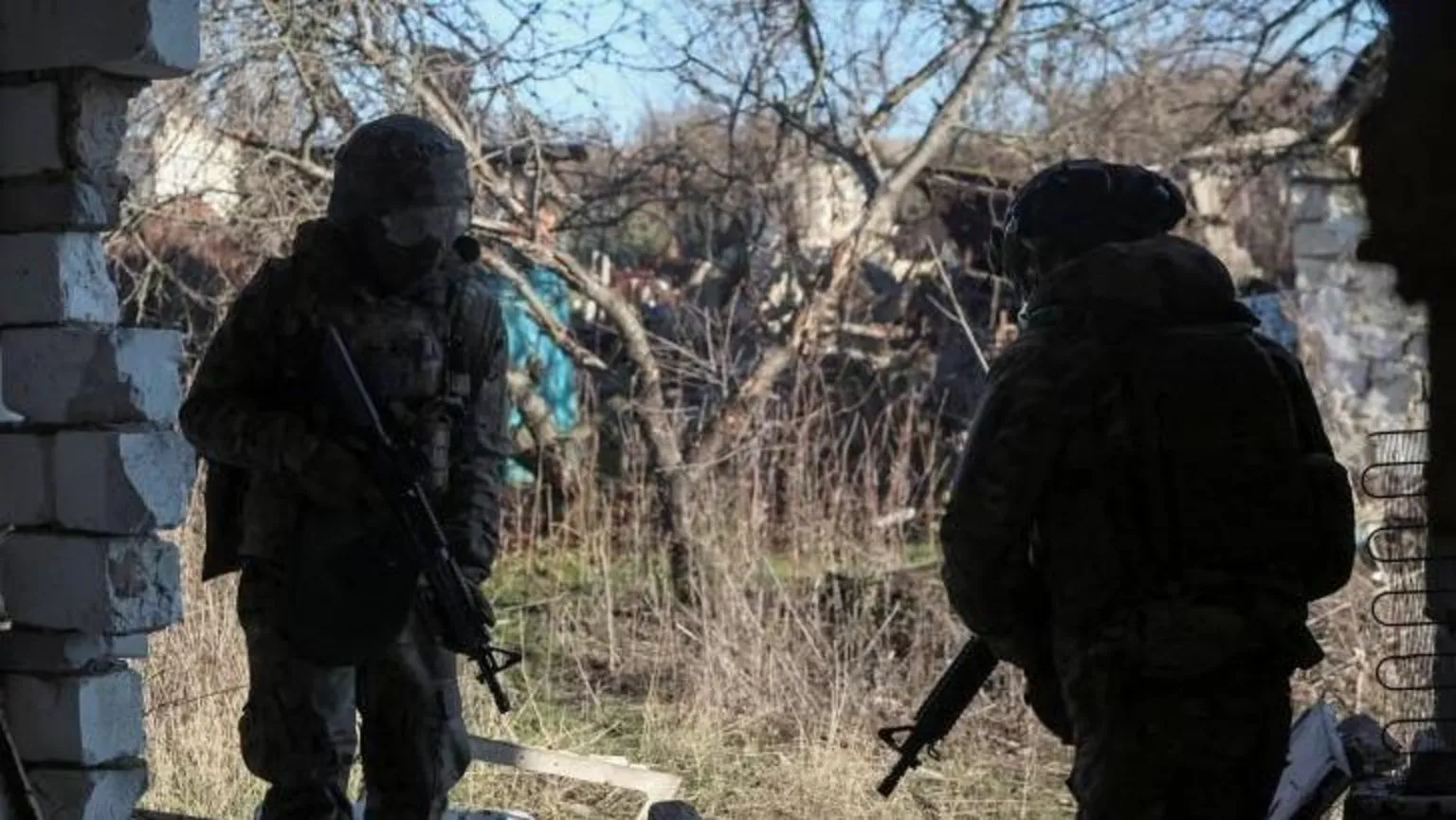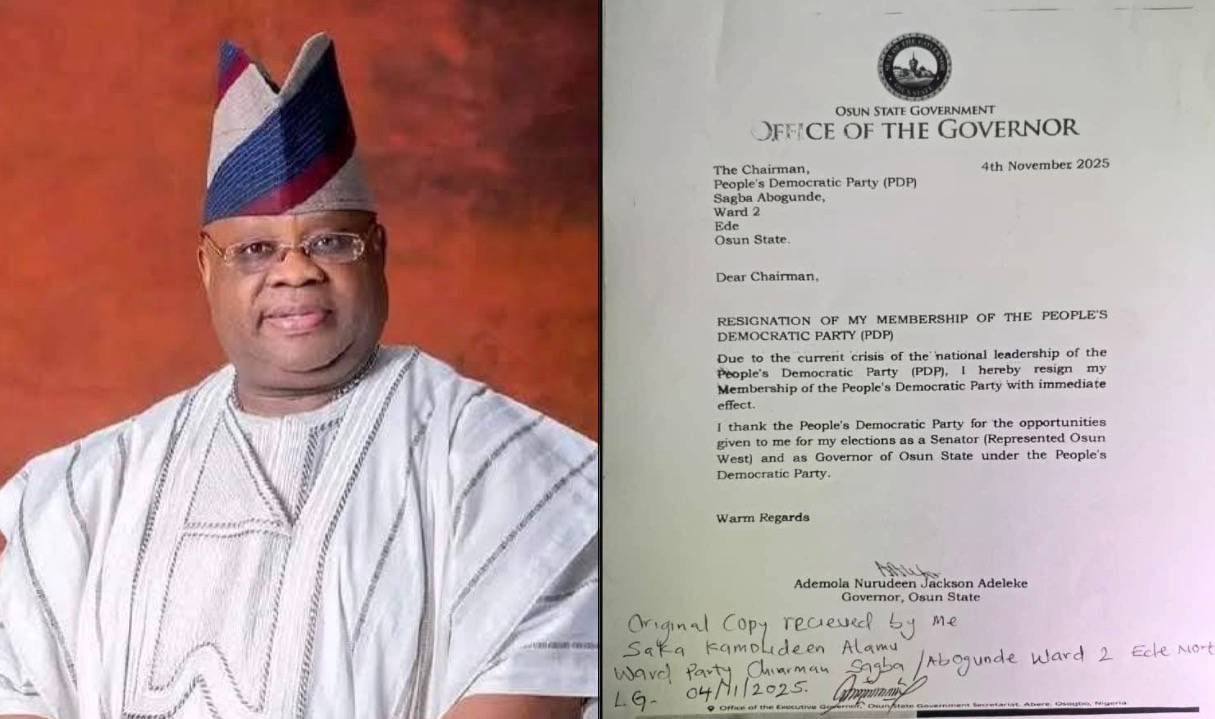With a dusting of fresh winter snow settling around us and the crackle of electricity loud in the wires over our heads, Michael runs his gloved fingers over golf ball-sized holes in the crippled hulk of a huge transformer.
“Here, and here, and here,” he says, as he shows where shrapnel from a Russian missile punctured the transformer’s thick sides.
Sharp metal fragments of the missile lie on the ground nearby.
Along the way, other transformers as big as bungalows are disappearing behind protective cocoons of concrete and sandbags.
Above us loom the high, forbidding, Soviet-era walls of the power plant’s vast turbine hall. Panes of glass for half a mile shattered by explosions from the 12 missiles that have landed here since mid-October.
For all the well-publicised damage, the authorities don’t want us to reveal too much.
Since October, when temperatures began to plummet, Russia has been using strikes on Ukraine’s power grid to force the civilian population into submission. For two weeks, the BBC watched engineers and technicians who run the network racing to repair the damage and keep electricity flowing across the country.
We have been asked not to reveal the precise location of some of the facilities we visit. We’ve also altered the names of some of the officials we meet.
“Every time the equipment is damaged, it gets us all right here in our soul,” Michael says, tapping his chest.
Some of these huge rust-stained machines are older than the men who run them. But for Michael, the plant’s manager, they’re his babies.
“It’s our life. Our second family.”
Michael sent his first family – his wife and teenage son – to Europe early in the war. Their dog, a playful golden retriever, now accompanies him to work every day.
The transformer – 130 tonnes of twisted metal, dangling wires and scorch marks where cooling oil leaked and caught fire – is not easy to replace.
“I know how much effort it takes to build this, to install and launch it,” says Michael, a veteran of 30 years in this industry. “It’s not something you can buy in a store.”
The same goes for the turbines inside – monstrous, deafening mechanical dinosaurs, churning and hissing away at the heart of the plant. They’re hugely impressive machines, but there’s little time to admire them, as the air raid siren sounds for the third time this morning.
In a well-practised drill, most of the plant’s staff head for the bunkers. The atmosphere is relaxed – such interruptions are commonplace – until word starts to spread of a fresh wave of Russian attacks on the power grid. A sister plant in the west has been hit. A picture circulates of fire raging in a turbine hall much like the one we were in just now.
Then, even through the thick concrete walls of our underground retreat, we hear a distant explosion. There’s tension in the room as the men and women check their phones. A crowded apartment block, not far away, has been hit.
The scene, when we arrive soon after dark, is chaotic and desperate. A missile has torn a gaping hole in the middle of the nine-storey building. Thick smoke, pierced by flashlights, rises from a pile of rubble. Dozens of rescue workers and volunteers are working frantically to find survivors.
The death toll, which mounts inexorably over the coming days, is one of the highest of the war so far. Mothers, fathers, children. Whole families.
At the power station, the following morning, the mood is bleak. Everyone believes the missile was aimed at them.
“We need to stop the attacks,” Michael says. “We need to close the sky over Ukraine.”
Until that happens, Ukraine’s entire grid will be in jeopardy. Especially substations, which have borne the brunt of Moscow’s wrath. These vital hubs, where transformers turn high voltage electricity from power plants into lower mains voltage that businesses and homes can use, have been targeted over and over again.
Each hit deprives hundreds of thousands of households of electricity, forcing the state energy company, Ukrenergo, to find ways of diverting power along alternative routes. The firm agrees to give us rare access to a substation, on condition that we do not reveal its location.
On the day we visit, a frigid wind whistles across hundreds of miles of open farmland and a watery winter sun pokes through the clouds. The sprawling facility, with its maze of pylons, cables and imposing machinery, feels remote and impersonal, but around 15 million Ukrainians depend on it for power.
It’s been hit six times with missiles and drones.
The manager, Serhiy, who’s worked here for decades, surveys his shattered empire. Two of the devastated transformers are among the largest in the world, weighing more than 300 tonnes. The specialised steel innards of one of them have been torn out and lie folded on the ground, like the leaves of a clumsily discarded book.
Data collected by Kyiv’s Energy Industry Research Centre (EIRC) suggests that about100 substation transformers, of various sizes, have been hit since October. Due to their cost and the many months it takes to manufacture them, not a single one has yet been replaced
Serhiy points out the gaping hole in the administration building, where a bookcase and dangling light bulb are pretty much all that’s left of his office. He watched the destruction from 500m away, as a “kamikaze” drone tore into the building, wrecking the control room and taking the substation offline.
“We knew it would happen sooner or later,” he says.
Repairing the damage will take years.
“They know perfectly well why this facility is important for Ukraine. That’s why they decided to destroy it.”
You must feel angry all the time, I suggest. Serhiy is a man of few words.
“Hate,” he replies simply. “Hate towards those who came to kill my people.”
With Western help and several months of experience, Ukraine is getting much better at defending itself. Most of the drones fired by Russia are now shot down before reaching their targets, and most of the missiles too. Data from EIRC shows fewer than 10% of the 1,400 missiles and drones fired at Ukraine’s civilian infrastructure since early October have actually destroyed key components of the grid.
But it’s still a scramble for the country’s engineers to keep up.
Following reports of overnight shelling near the southern city of Nikopol, we join a repair team from DTEK, the country’s largest private energy company, in the middle of a field, overlooking the Dnipro River. The sound of artillery booms across the wide, silver expanse of water. The battle lines aren’t far from here.
The damage looks slight. A couple of shallow craters in the field and a few low voltage lines draped across Ukraine’s famously dark soil.
But the nearby village of Vyschetarasivka is without power, yet again. The men, some wearing flak jackets, get to work, scaling the poles and twisting wires together. After the colossal scale of the power plant and substation, today’s work feels almost delicate.
“This is pure terror,” says chief engineer Volodymyr. “Just terrorising the population, causing maximum damage to the energy infrastructure.”
Volodymyr would much prefer to keep busy modernising and improving Ukraine’s electricity network. But he’ll keep the repairs going just as long as the Russians keep firing.
“We feel a bit hopeless, not being able to influence the situation,” he says. “But if necessary, we’ll come back and repair the lines every day. The people need light.”
In the village, half emptied by almost a year of war, the power cuts have become more frequent and less predictable.
“Electricity affects pumps and boilers,” says Bohdan, as he arrives with empty bottles to collect water. “If there’s no power, people freeze. And we have to buy water from the store. If you have a generator and petrol, you can survive. Otherwise, I don’t know how older people do it.”
The mayor, Oleksandr Sivak, wrapped up against the biting east wind, says those who can’t stand it have already left.
“As long as we’re alive and have even a bit of electricity and water, we’ll keep on living,” he says.
The sound of artillery is getting closer, forcing Oleksandr to drop to his knees. It’s a sensible precaution, the result of long months of constant danger.
Downriver, beyond Nikopol, a town shelled day and night from Russian positions to the south, we meet another team repairing power lines, reconnecting communities under Russian occupation until the autumn. Here, amid the debris of recent conflict – a rocket lodged in the pavement, shattered headstones in a cemetery and a score of recently dug graves – the DTEK team must proceed with caution.
The use of anti-personnel mines along former front lines adds another element of hazard. Up ahead, State Emergency Service personnel are walking slowly along a line of pylons, inspecting the undulating ground for discarded ordnance.
“We feel like semi-soldiers,” says team leader Fyodor, another grizzled veteran of the industry, as he pauses for a cigarette.
Above him, colleagues in a cherry picker are hard at work, hauling a new high voltage line up to a pylon.
“Sometimes we go on trips to restore power in an area. Then they shell us and we have to go back. It’s a race.”
For all the hardship we observe during two weeks on the road in Ukraine, it’s a race the engineers seem to be winning. People grumble, for sure, when the lights go out, their apartments grow cold and the water stops flowing. Hospitals have reported higher numbers of road traffic accidents as motorists move around darkened city roads.
But away from the front lines, people have adjusted to the lack of electricity much as they have to the air raid sirens and occasional explosions: with pragmatism and ingenuity.
On city streets, in the middle of a blackout, portable generators churn away on pavements and down alleyways. In Kyiv, for all the midwinter gloom, shops are open, restaurants full. Walk into any motorway service station and the same scene greets you every time: brightly lit, well-stocked shelves, muzak playing and the hand-driers in immaculate toilets blasting out hot air.
You could be forgiven for thinking you were anywhere else in Europe. And that’s the way those in charge of Ukraine’s energy grid would like it.
“It was our aim for many years, to integrate into the European grid,” says Oleksandr Kharchenko, EIRC’s director. “And now it’s happened.”
Russia’s energy war, just like its military campaign, is having the exact opposite of its desired effect. Far from separating Ukraine from Europe, it’s binding it ever closer, in a process that mirrors the country’s gradual integration into the Western military alliance, Nato.
Ukraine officially declared its desire to join the European grid in 2017. It’s typically a lengthy process – it took Turkey 11 years – but when Vladimir Putin decided to invade last year, the process accelerated dramatically. In February last year Ukraine disconnected itself from the Russian grid for the first time, to test the country’s ability to manage in “isolated mode” during the winter months, when demand for electricity peaks.
The disconnect, the first of two, was due to take place on the 18th and last just three days. The Russians requested a delay. It eventually happened at 01:00 on 24 February.
“We disconnected four hours before the invasion started, from this very building,” Volodymyr Kudrytskyi, CEO of Ukrenergo, told me at his Kyiv headquarters.
“When the invasion started, it became obvious we would not reconnect.”
Was the invasion timed to coincide with Ukraine’s moment of maximum isolation?
“I absolutely believe the war started on the 24th just because of this,” Kharchenko says.
Infrastructure was targeted in the early days, but not enough to plunge the country into chaos.
“They thought we would have a national blackout,” Kharchenko says. “That this would cause panic, no connection, no government, no-one knows where the president is, how to connect with your siblings, your parents.”
None of this happened.
Amid mounting speculation about Moscow’s intentions in the weeks before 24 February, the company had quietly moved the grid’s main control room to an undisclosed location further west. A second experimental disconnect was scheduled for June, when demand is typically low. If everything went according to plan, Ukraine would finally join the European grid in October 2023.
But with industry shutting down and millions of Ukrainians fleeing the country, electricity consumption plummeted by 40% within three days of the invasion. Ukrenergo asked its European partners if it could bring forward the second test.
“They looked at us like we were crazy,” Kharchenko, who advises Ukrenergo, recalls.
But by 16 March, it was all done. With Russian troops still menacing the capital, Ukraine connected to the European grid, a year-and-a-half ahead of schedule. For a few months, Ukraine was even able to export its excess electricity.
That all stopped in October. Since then, the country has had to make do with half the electricity it had before 24 February.
But it hasn’t collapsed.
“I think the reason is the same why they cannot win on the battlefield,” Kudrytskyi says. “Because we were prepared and we were resolved to win this particular battle.”
Ukraine has fought many battles over the past year.
In a sprawling, hilltop cemetery on the edge of the eastern city of Dnipro, hundreds of blue and yellow Ukrainian flags flap noisily in the stiff breeze. Rows of freshly dug graves await the latest casualties from the front, 100 miles to the east. Each cross, unmarked grave and rippling flag drives home the desperate cost of this war.
But overhead, rising against a fiery sunset, pylons march away across the landscape.
Ukraine is still connected
BBC














